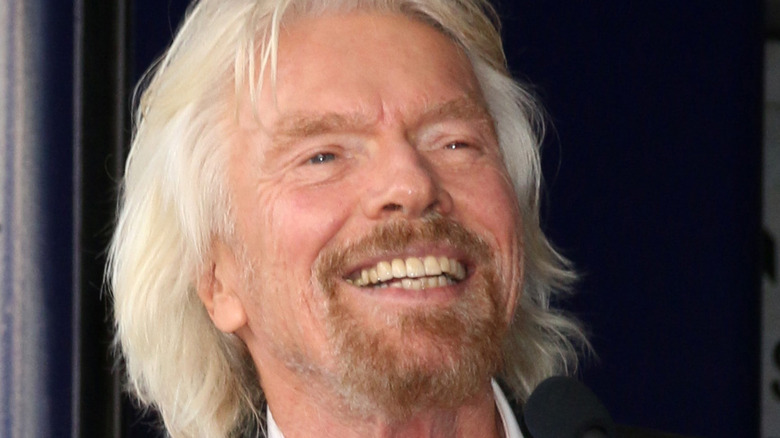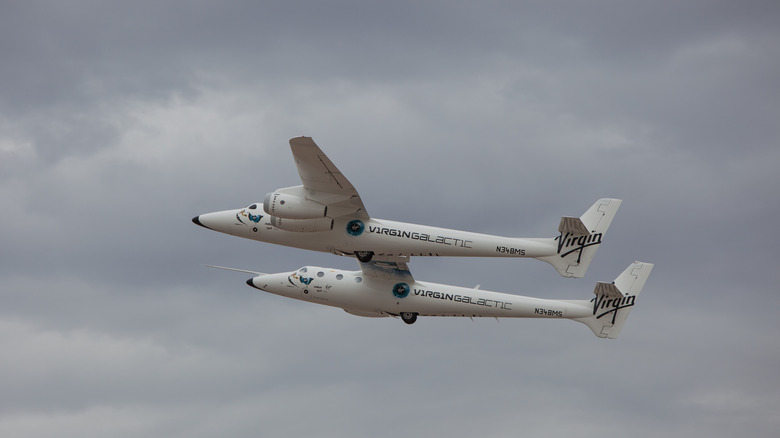Richard Branson's Space Flight Explained
"Big day ahead. Great to start the morning with a friend. Feeling good, feeling excited, feeling ready," tweeted Richard Branson on Sunday morning, hours before he was set to be jetted into space. Though the billionaire may have sounded cavalier, the announcement came after around two decades of work and planning into the frontier of space tourism. Branson founded Virgin Galactic in 2004 as an offshoot of his airline business, Virgin Airlines. His flight this morning makes him the first of the so-called "space barons" — including Elon Musk of Space X and Jeff Bezos of Blue Origin — to make a successful extraterrestrial voyage.
According to CNN Business, the spacecraft used was the VSS Unity22, which had already conducted more than 20 test flights in preparation for the big day. The VSS Unity22 took off at 7:30 a.m. PST from Spaceport America in the ominously named city of Truth or Consequences, New Mexico. It spent less than 20 minutes in the skies before safely landing, and the entire trip was live-streamed for space enthusiasts. However, the video did not completely cover the complicated technology that was involved in the journey.
Here's the wild way the rocket works
Virgin Galactic's process is not like a space rocket seen in other televised launches. Instead of a vertical ascent, the rocket was attached to a "mothership" called the WhiteKnightTwo (via CNN). This mothership essentially looked like two jets that were attached at the wing, with the rocket between them. The WhiteKnightTwo had a traditional take-off from a runway and climbed to more than 50,000 feet above the ground. At this point, the WhiteKnightTwo dropped the rocket, allowing it then to blast away.
Although the VSS Unity22 wasn't equipped with enough power to break from the pull of gravity in Earth's orbit, it still reached a speed of 2,300 miles per hour, which is three times the speed of sound. After about a minute in its solo flight, the spaceship reached just over 50 miles above Earth, which is the edge of space. At this peak, the six passengers on the flight experienced weightlessness, and the engines shut off so that the rocket was suspended in microgravity and Branson and the other travelers could view the planet from outer space.
To land, the spacecraft used a "feathering system," mimicking a badminton birdie's wings to glide slowly back to Earth. It retracted the wings as it got closer to complete a runway landing.
Branson has already shared his thoughts on the successful mission.
"Welcome to the dawn of a new space age," he tweeted upon returning to Earth.

